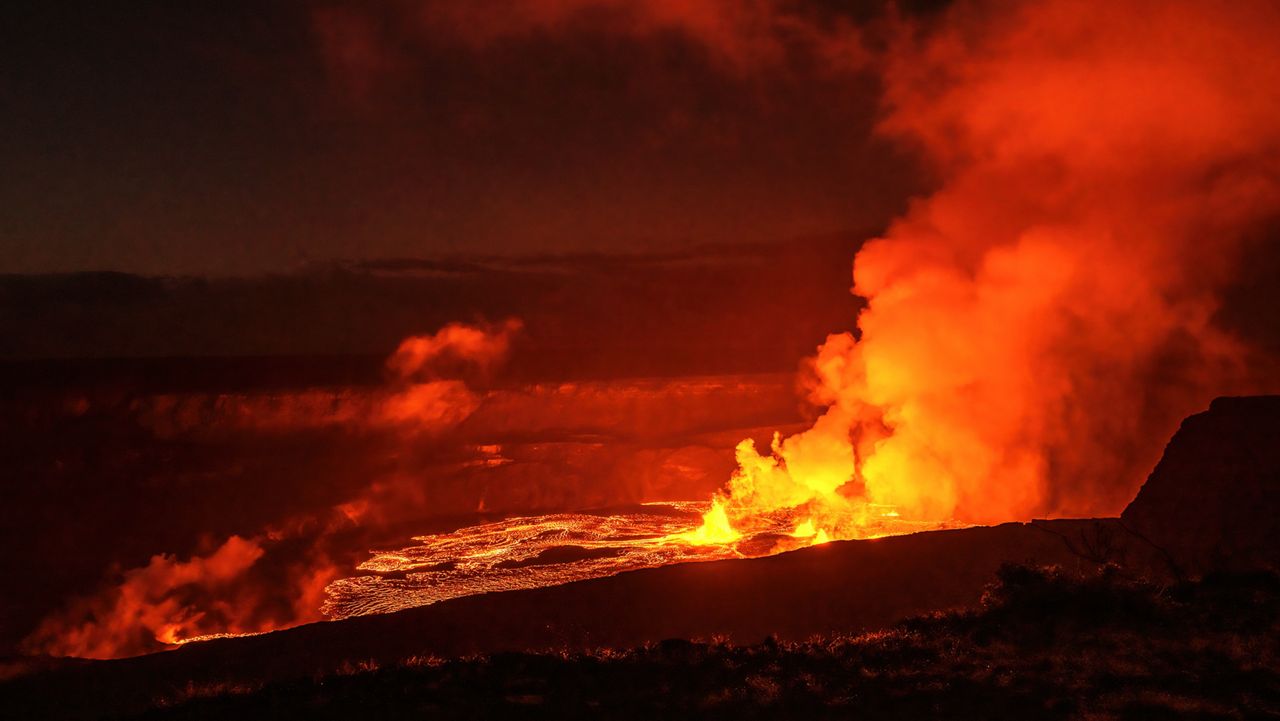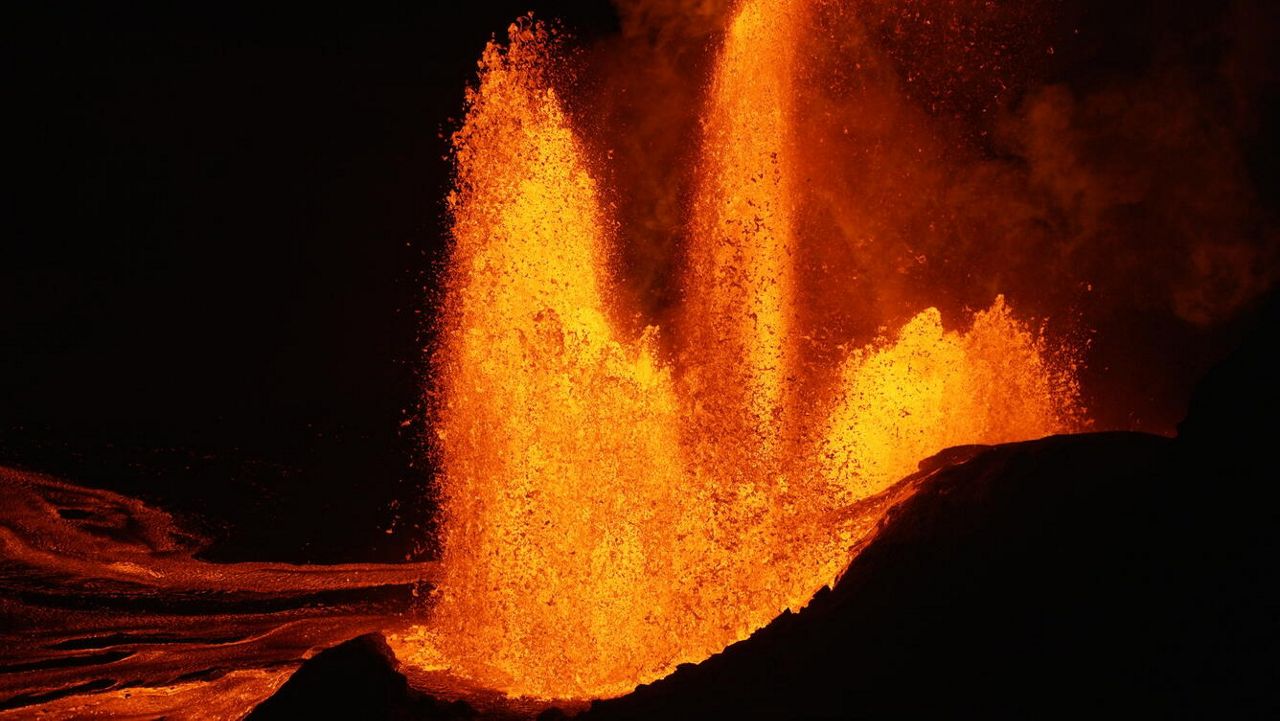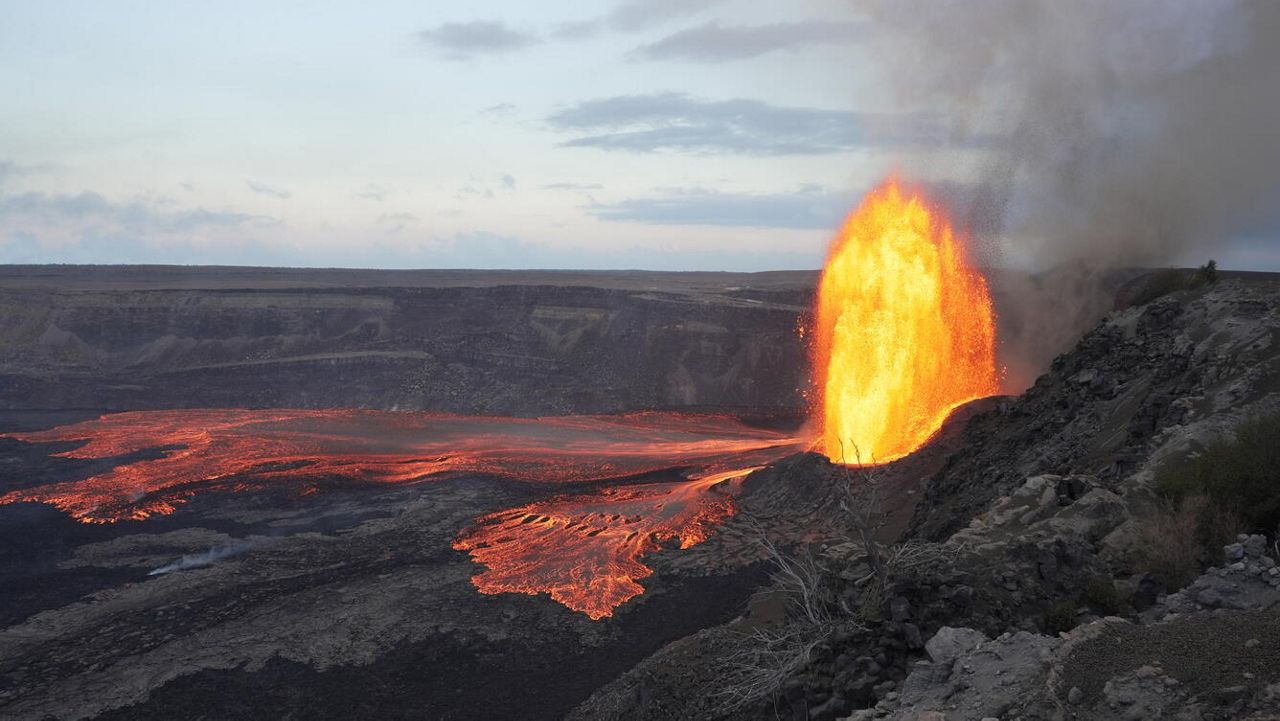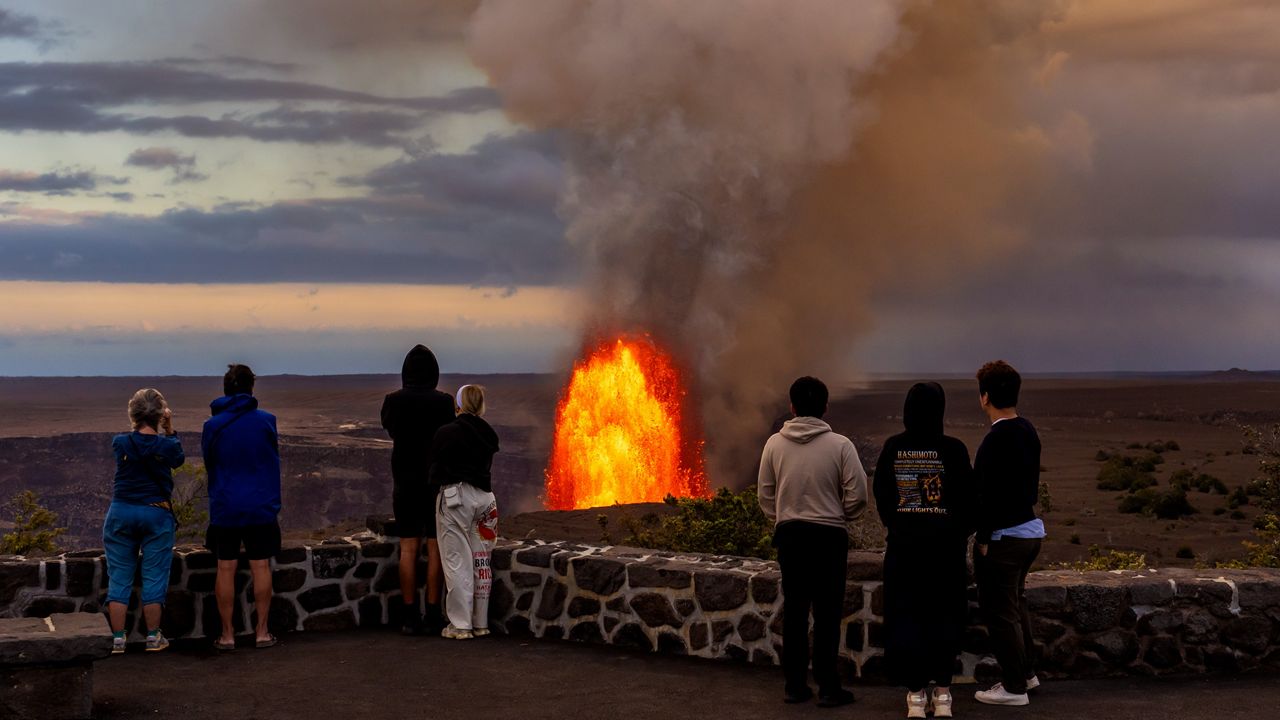HAWAII VOLCANOES NATIONAL PARK, Hawaii — Since Oct. 4, the Hawaiian Volcano Observatory has reported elevated activity in the south summit area of Kilauea. However, the volcano is not erupting at this time.
On Wednesday, HVO said in a volcano update that an eruption “could emerge with little notice.” The observatory said the eruption would take place in the region from Halemaumau south to the location of the December 1974 vents, and that it would happen while heightened unrest is occurring.
Inflation at the summit is at its highest level in over five years and is similar to the level seen right before the last eruption on Sept. 10.
Over the past 24 hours, HVO said Kilauea’s summit experienced about 134 earthquakes. On Oct. 5 and 6, seismicity peaked with over 250 earthquakes per day.
Sulfur dioxide emission rates remain low, measuring at a rate of about 100 tonnes per day on Oct. 6.
As a precaution, Hawaii Volcanoes National Park closed some areas, including:
- Hilina Pali Road from Chain of Craters Road to Hilina Pali Overlook
- Kulanaokuaiki Campground
- Puʻupuaʻi parking lot, Puʻupuaʻi Overlook, and the trail that connects Puʻupuaʻi Overlook to Devastation Trail.
- Devastation parking lot and Devastation Trail
- Keanakākoʻi Overlook and the paved trail from Chain of Craters Road
- Crater Rim Trail from Chain of Craters Road to Keanakākoʻi Crater
- Maunaiki Trail
- Kaʻū Desert Trail
Kilauea is arguably the world's most active volcano, according to the U.S. Geological Survey. This year, Kilauea erupted three different times, with the last eruption ending on Sept. 16.
Michelle Broder Van Dyke covers the Hawaiian Islands for Spectrum News Hawaii. Email her at michelle.brodervandyke@charter.com.








